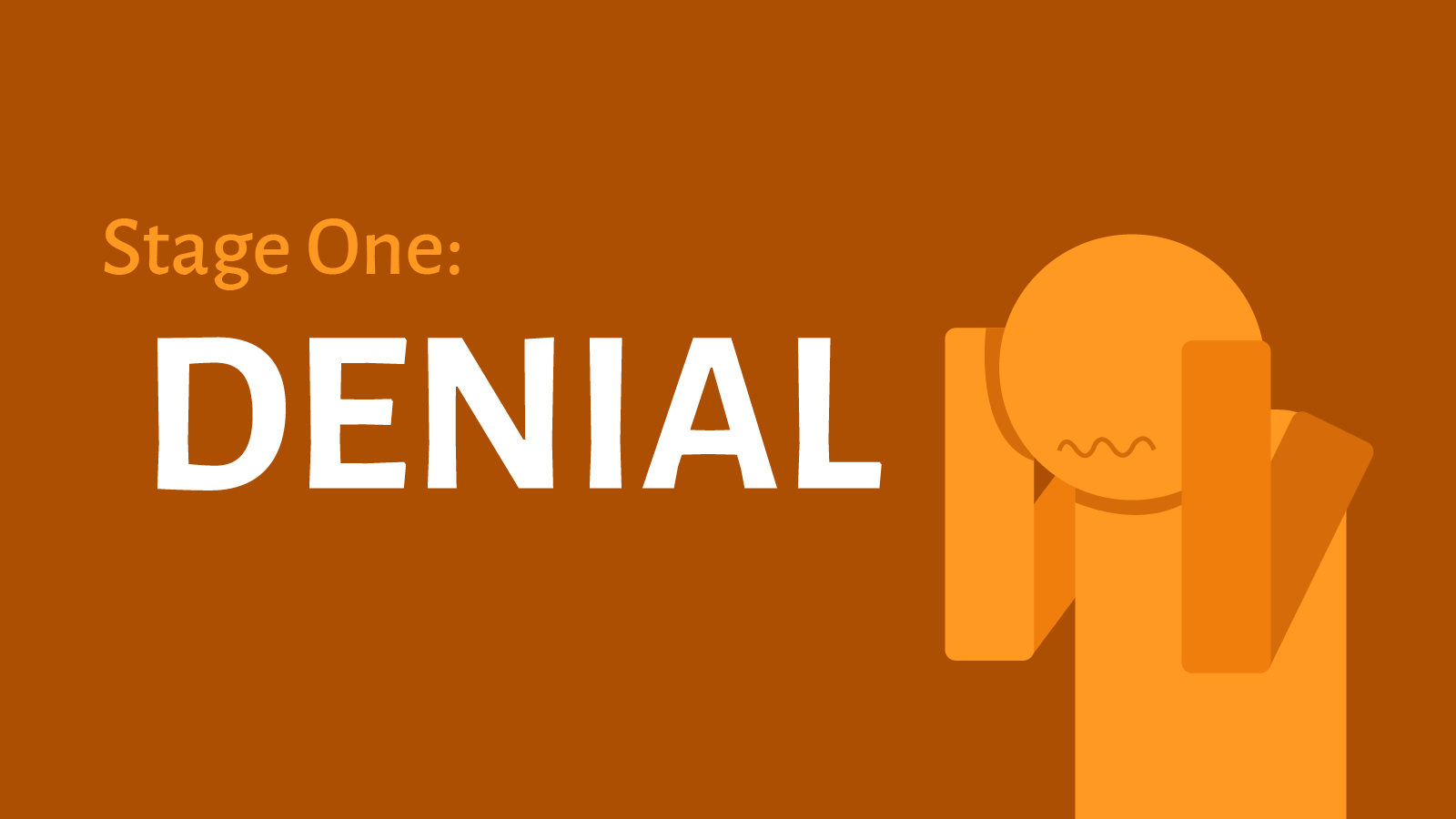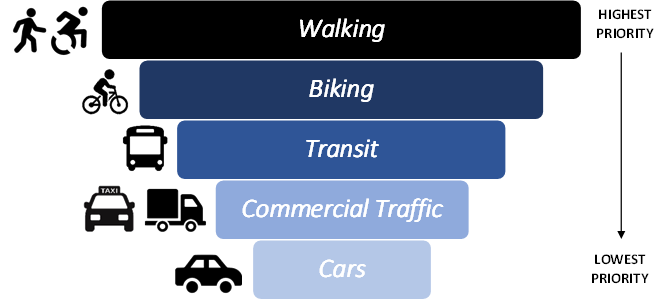The Death of a Car City
Michel Durand-Wood is a Strong Towns member in Manitoba, Canada, who writes about infrastructure and municipal finance at Dear Winnipeg. This article first appeared there in slightly different format, and is shared here with permission.
(Source: Shina Shayesteh.)
Dear Winnipeg,
I recently attended a few public engagement workshops around the new draft strategies for the upcoming Transportation Master Plan 2050. Given the contents of those proposed strategies, and the recent comments by a city councilor that we are a car city, and always will be, I thought it important to say something. Some of you will be familiar with all of this already, so if that’s you, please bear with me.
For the rest of you, I’m very sorry to be the bearer of bad news, but the dream of being a car city forever, is dead. There is nowhere near enough money, and there never will be.
(Downer, I know.)
I know many of you will roll your eyes at that statement, and scoff at the very idea that there isn’t enough money.
Well congratulations, you’ve taken the first step toward healing after a major loss! You’ve been told the news of the death of your impossible dream, and you are now facing the first of the five stages of grief: denial.
(Source: Shina Shayesteh.)
Denial
I know this is hard to believe, but let’s walk through the numbers real quick. The replacement cost of all 7,335-lane kilometers of our roads and bridges is just shy of $15 billion according to 2018 City report. Given inflation since 2018, and the fact that a more recent report shows we now have 8,300-lane kilometers of roads and bridges, it’s probably safe to say that the replacement cost is actually closer to $16 or $17 billion. This is an important number because as we all know, every road eventually needs to be replaced.
In 2021, we budgeted $152.2 million for the maintenance and replacement of roads, which is a never-before-seen, record high amount. That was a 17% increase over the $130.3 million budgeted in 2020, itself a record high amount, and by far, the largest share of the annual capital budget.
But even at that rate, that’s only enough to replace each road once every 100+ years, with no maintenance in between.
That’s obviously not nearly enough.
So how much is enough? Well, like I’ve written about before, at an average 25-year replacement cycle, the rate used by every developer’s cost-benefit analysis, we need $680 million per year (4% times $17 billion) to maintain and replace our road network as it is today. And since on top of that, we’ve been overspending by an average of about $100 million annually for the past decade, it looks like we need about $780 million per year to do it sustainably.
So that’s about $628 million per year MORE for roads than we spent in 2021, the year we spent the most we’ve ever spent on roads.
To put that number in context, we took in $658.7 million in property taxes in 2021. That means we need something like a 95% tax increase to get that kind of money. That’s right, double our taxes.
That’s obviously a crazy, impossible number. No one running on a platform of doubling our taxes is EVER getting elected.
At this point, I can feel you moving to the next stage of grief.
(Source: Shina Shayesteh.)
Anger
I know what you’re thinking:
“This is all that jerk mayor’s fault!”
(It’s not.)
“This is all because of the spineless Council we have!”
(Nope.)
“I blame the all-powerful bike lobby!”
(I’ve met him, he’s nice.)
“Dang boomers, always messing it up for all of us!”
(Our forebears were making the decisions they thought were right at the time.)
At the anger stage, it may seem like finding a scapegoat to lay all the blame on would feel good. Cathartic even. Plus, if someone was to blame, maybe we could make THEM pay!
But, the reality is this has been going on for longer than most of us have been alive. It’s the result of many decisions made over many years, each compounding on top of the next. And it’s been happening all over North America.
So the fact that we are here is nobody’s fault.
Nevertheless, here we are.
(Source: Shina Shayesteh.)
Bargaining
At this point, you will inevitably say something along the lines of:
“We don’t have to double taxes, we just have to cut the waste.”
“Police spending is out of control, that’s why we don’t have enough money.”
“Eliminate red tape, find efficiencies!”
“Zero-based budgeting is the answer.”
“The Province/Feds just need to step up.”
It’s clear you’ve arrived at the bargaining stage.
Rather than accept the death of your dream, you’re grasping at straws trying to find a way to pay for it all. Look, I’m not saying your ideas are bad. We probably should implement some of them, maybe even all of them. But what kind of savings are you expecting to find? 5%? 10%? Not bad, but we need something closer to 55%.
And what do those kinds of cuts look like? We could completely eliminate ALL of the police department ($312.7 million in 2021), and ALL of the fire and paramedic department ($216.3 million in 2021). Then we’d only have about $100 million to go! A measly 15% tax increase should bridge that gap…
Again, these are crazy, impossible numbers. No one is going to find 55% savings in our operating budget. No one.
And if you think the operating budget has nothing to do with capital spending on roads, then with all due respect, you don’t understand accounting.
So what about other levels of government? Well, given that the Province is already in a deficit position, which provincial services do want to see cut? Healthcare? Education? Or maybe you think some provincial government is going to campaign on raising the provincial sales tax by 2%, taxing the entire province in order to hand all of that money to just the City of Winnipeg?
Let’s face it, that imaginary government will never get elected.
And the Feds? Couldn’t they just borrow the money for us? I mean, I guess they could… But what makes us think we can demand that the children and grandchildren of the people of Halifax, Toronto, and Calgary should be the ones to pay for our roads, when we’re unwilling to tax ourselves to do it at the city level?
There is no way to find the kind of money we need in order to maintain and replace even a fraction of the roads we already have. Sorry.
(Source: Shina Shayesteh.)
Depression
So now what? What are we supposed to do? Reduce the amount of car infrastructure? Walk? Bike? Take transit? Who’s going to do that? What about groceries? Snow? Kids? My taxes? Waaaaahhhhhh!!
There, there. Let it all out. I know, it’s sad. We’ve all gotten used to living as a car city, and losing that is hard. Very hard. Just like any loss, really. But we’re all going to have to adjust. Take it one day at a time. And eventually, it’ll feel normal to walk, bike, or take transit to go to work, or to run most errands.
Don’t worry, there will still be cars for the trips that need them. Just a lot fewer of them.
And on those trips, driving will be glorious: There will be no potholes, because we’ll only have as many roads as we can sustainably afford to pay for.
(Source: Shina Shayesteh.)
Acceptance
Great, now that you’ve reached acceptance, we should talk about the Transportation Master Plan the City is working on. It’s supposed to guide us in our transportation policy decisions into the year 2050. And the draft Key Directions & Strategies document they just released does hint at a need to reduce our car dependency as a city.
Unfortunately, the fact that it talks about maintenance budgets being “stretched increasingly thin,” about balancing “the needs of all users,” about the need to “increase auto mobility,” and the inclusion of a list of 33 new road expansion projects totaling billions of dollars, shows a city that is still in the denial stage about our impossibly expensive car-centric transportation system.
There is nowhere near enough money to maintain the road network we currently have, much less add to it. And there never will be. Pretending otherwise won’t make it so.
And anyways, this is supposed to be a Transportation Master Plan, not a Transportation Master Fantasy.
A city that had reached the acceptance stage would have very different strategies than those we are being presented with. After all, what does a plan look like when you recognize and accept that you have no money?
Well, first of all, you stop adding capacity. No new roads, no new lanes. Not even when adding active transportation. Not even by adding technology to make traffic flow more efficiently. Capacity is capacity when it comes to induced demand, doesn’t matter how you added it. In reality, we need to keep reducing capacity for cars until we reach a level we can afford.
Second, no more balancing the needs of all users. We must prioritize the modes that cost us the least in order to incentivize people to use those modes the most. That looks like this:
Hierarchy of urban transportation. (Source: Author.)
But people will never go for it, you say? Sure, as long as we keep presenting a menu with no prices, of course people will keep ordering the lobster! But much of this could have been avoided if we were just willing to include some rough costs in this plan (after all, both the Winnipeg Transit Master Plan and the Pedestrian and Cycling Strategies have prices in them). People make different choices when confronted with the price of those choices. And the price of a car-oriented city is a 95% tax increase. Do we care to put that question to a plebiscite?
I’ve been writing about this kind of stuff for almost three years now, and in that time, I’ve had the opportunity to talk with developers, engineers, planners, accountants, councilors, and journalists. Not a single one has ever been able to present a counter to the numbers I’ve talked about here.
Isn’t it time to be honest with ourselves as a city?
All it takes is a little fourth-grade arithmetic, and a desire to ask a few obvious questions, like: how much money do we need to properly maintain the road network we already have in perpetuity? And, where is that money going to come from?
So I’m calling on you faithful readers… Talk to all your friends, neighbors, and colleagues about this. Contact your councilor. Participate in the public engagement. If you’re a journalist, push back on the standard narrative. Dig deeper. Ask a few obvious questions. And if you’re a councilor, planner, engineer, accountant, or other public servant, use the weight of your credentials to share this issue widely.
Can we really afford what we’ve built?
Because if the answer is no, then continuing blindly down this path is going to be really bad for everyone. No exceptions.
Hugs and kisses,
Elmwood Guy








Michel Durand-Wood lives in the Winnipeg neighborhood of Elmwood with his wife and three children. He writes at DearWinnipeg.com, a really fun blog about infrastructure and municipal finance. He has no formal training or education in city planning, municipal finance, infrastructure maintenance, or anything else he talks about. He's just a guy, in love with a city, asking it to make better use of his tax dollars.